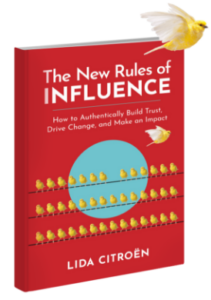 For some reason, this gets overlooked: the name you give your email, the phrase you use to close a message, and the signature block (or not) you use to end an email. Call me picky, but I see a lot of mistakes and personal branding missed opportunities here.
For some reason, this gets overlooked: the name you give your email, the phrase you use to close a message, and the signature block (or not) you use to end an email. Call me picky, but I see a lot of mistakes and personal branding missed opportunities here.
Your Email Name:
Particularly in business or professional communications (job seekers, pay attention!), your email name says a lot about you. Consider these email names:
- BigGuy412@Host.com
- PartyGal123@Host.com
- Val64343.34@Host.com
- WarriorWAGun@Host.com
- Jenny.867.5309@Host.com
Ok, I made those up, but you’ve seen some similar! You have typed in a prospective job candidate or client’s email name and thought, “Huh, is that how they see themselves?” What does your email name say about you?
With a unique name like mine, it is not too difficult to secure LidaCitroen or Lida.Citroen on many email platforms. For more discrete email usage (i.e. my online shopping), I don’t want to always disclose gender, so I might use “LCitroen”. Regardless, I use my name for all professional contacts and communications. I am reinforcing my name, brand, and professionalism as I do this.
Email Sign Off:
How do you end your email messages? Do you write:
- TTYL,
- Yours truly,
- Talk at ya later,
- Cheers,
- Ciao,
Each of these can send a very different message. For instance, TTYL feels fine when I’m texting my college-age son and want to be brief. I might use “cheers” for a girlfriend with whom I have casual conversations. For business use, however, I keep it consistent and professional.
Personally, I like to use either “All my best,” or “Always,” as my sign offs for emails. These are a bit touchy-feely, yes, but to me they reinforce my genuineness, approachability, and passion for giving 100% to everything I do. When I sign an email with these messages, I remind myself of my desired personal brand, and I set myself apart from my competitors.
Email Signature:
The email signature is that formatted or consistent way you close your emails and provide your contact information. Typically, we set these up in the email client we use to write from (e.g. Gmail, Yahoo, AOL, etc.). Some of these programs are more limiting, some allow you to embed links, graphics, etc.
Your email signature will vary based on whether you work for a company that has a standardized signature block everyone must use or whether you are restricted by the email client.
Assuming you have flexibility and control over your email signature, here are some best practices:
- Consider your personal brand strategy in your email signature. How do you want to be perceived? Are you striving to be seen as approachable? Then, provide multiple ways of reaching you. Looking to be positioned as exclusive and discrete? Then less might be more.
- Keep social media links and icons to a minimum, unless you are a social media consultant! I see links to all sorts of social platforms, and when I visit them, the individual is not active there. If you are most focused on LinkedIn and YouTube, for instance, then list those.
- Be mindful of the load-time and weight of graphics. Big, bold email signature blocks with images, pictures, logos, and bright colors can be attractive, but they can also be cumbersome. Consider that many emails are read on mobile devices. These graphics can be overwhelming.
- Consider shutting off the feature which embeds you signature block into each response. Is one time enough? Do you need your contact information to appear with each “got it” response you post?
- Provide contact information where you truly are reachable. That PO Box in Florida where you sometimes get mail but use it as a satellite office location might not be relevant on your signature block.
Email is a powerful form of communication with friends, family, clients, prospects, and our community. When it comes to communications, it might feel efficient to be brief, when more is better. While it might feel inclusive to list a lot of details about you in your email signature, sometimes less is more impactful.
Your rule of thumb is always to use your desired reputation and personal brand as your guide.


[…] my personal email address to my work email. Takeaway: keep your work email separate from your personal email. Seems like common sense, but after almost 14 years at Google, things had gotten tangled together. […]